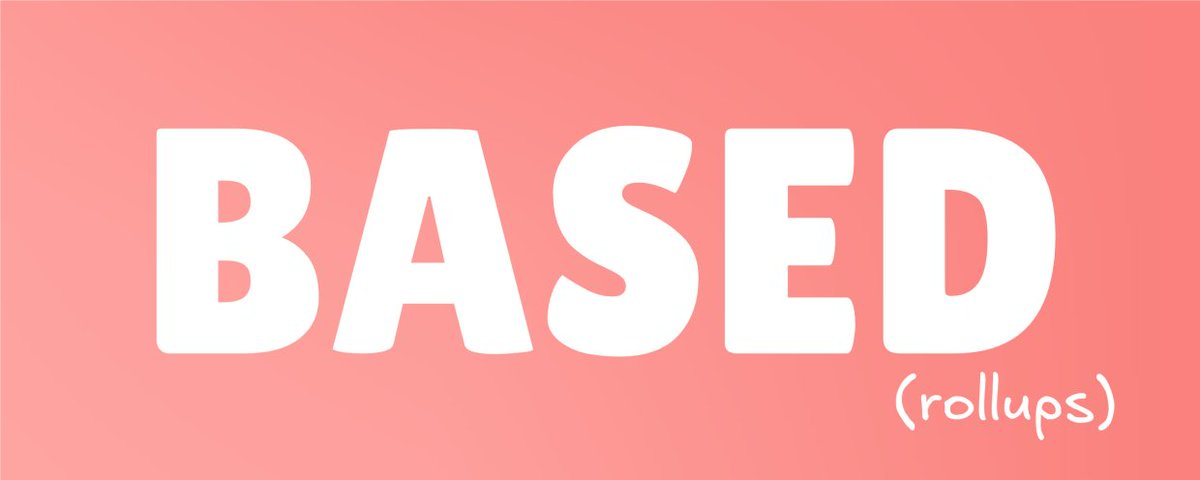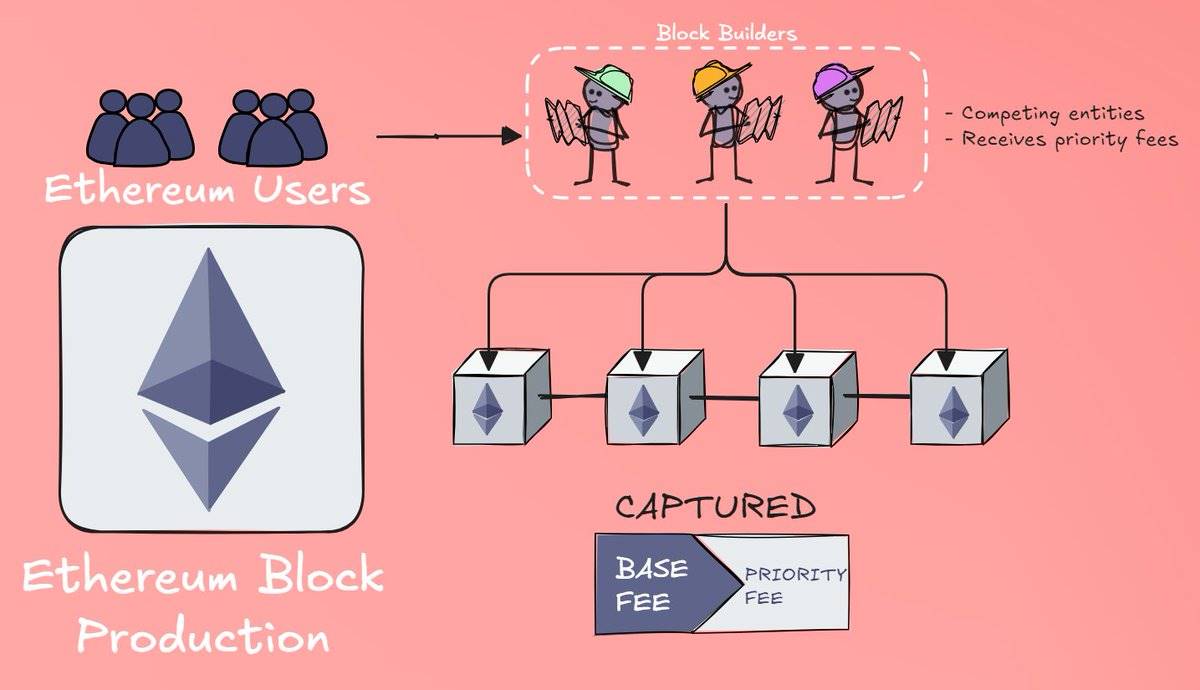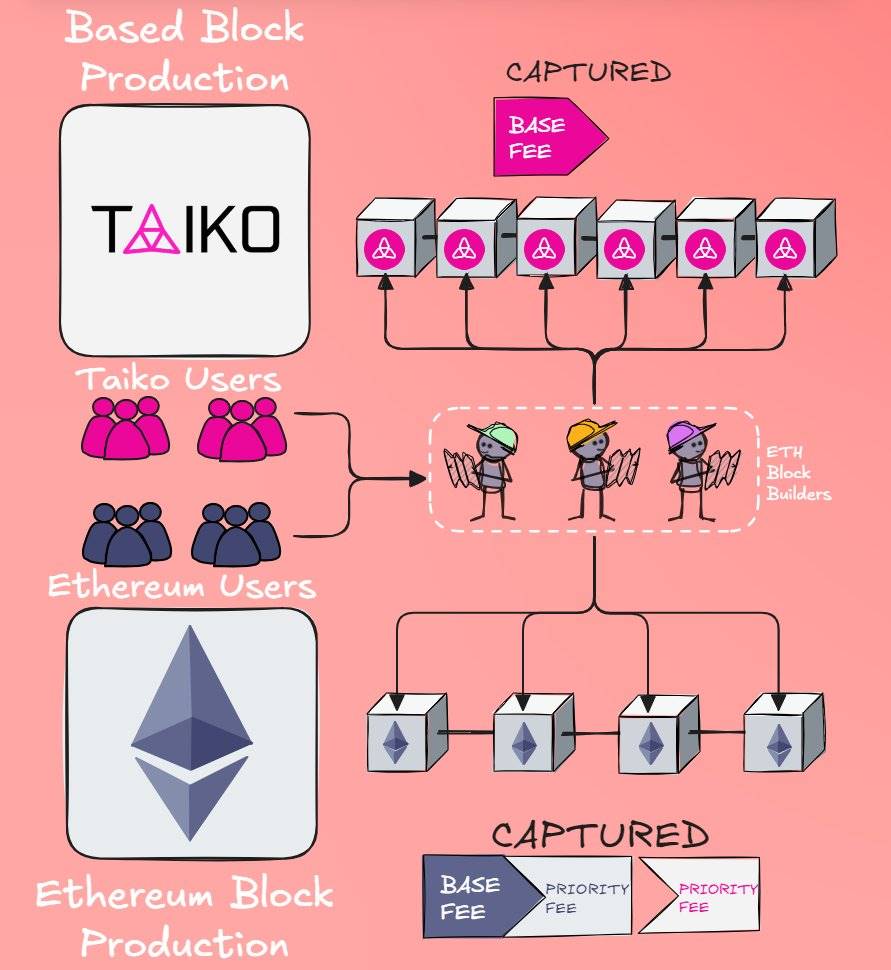If the Ethereum rollup ecosystem had been Based from the beginning, I believe its narrative position today would be better.
Author: BREAD
Translation: Deep Tide TechFlow

If you've heard any discussions about L2, you've probably heard of "Based" rollups.
They are different from "Optimistic" and "Zero Knowledge (ZK)" rollups because they are considered to have a stronger synergy with the Ethereum mainnet.
Here are the reasons (with image descriptions).
We'll start from the basics (simple term explanations - I promise it's brief), then talk about "regular" blockchains, and finally introduce the Based™️ structure.
Term Explanation
First, let's understand some terms and key roles.
Roles
Sequencer: A machine operated by the L2 team responsible for collecting user transactions, determining their packing order in the L2 block, and ultimately batch submitting to L1.
Block Builder: These roles are part of the pipeline equivalent to the sequencer in the Ethereum mainnet. They receive user transactions (public or private), maximize profits through specific sorting, and ultimately pass the transactions to validators to form a block.
Key Terms
Base Fee: This is the minimum fee users need to pay to enter a certain block, and its price is determined by the network congestion level. (For example, if the gas usage of the 10th block exceeds 50%, the minimum fee for the 11th block will increase). This fee is destroyed on Ethereum and some L2s.
Priority Fee: This is the "extra fee" or "tip" you are willing to pay beyond the base fee to get priority sorting in the block (i.e., your transaction is executed first in that block).
Understanding these, you can see why Based rollups are different from what we commonly see.
Ethereum Blocks
First, let's understand how Ethereum blocks are generated and which terms are key.
Please see the diagram below:

Now, let's explain the process in detail:
Ethereum users submit their transactions to the block builder.
These transactions indicate the maximum fee users are willing to pay, which will be used to pay the Base Fee (destroyed), with the remaining portion as the Priority Fee/tip (retained by the builder).
Then, the builder submits these blocks to validators to include them in the Ethereum main chain.
In the end, all fees paid by users are either captured by $ETH assets (through destruction) or obtained by participants in the Ethereum block building supply chain (such as the builder).
The former mechanism is considered a neutral alternative to direct public goods funding, while the latter provides incentives for a crucial part of the Ethereum block building process. Both are generally considered to have a positive impact on the overall network value.
Now, let's take a look at a typical L2.
Traditional Rollup Blocks
Taking Optimism as an example, we can maintain a structure similar to Ethereum, replacing the block builder (a collection of competing entities) with the sequencer (a single machine operated by the team behind Optimism).
Visual representation:

Looking at the process, you'll find they are very similar:
Optimism users submit transactions to the OP sequencer.
Similar to Ethereum, these transactions indicate the user's maximum fee, covering the base fee (OP Stack chains will destroy this portion, but not all L2s do this, such as Arbitrum), with the remaining fee difference as the Priority Fee/tip (retained by the team operating the sequencer).
The sequencer then sorts the transactions, proposes to include the next block in the canonical chain, and updates the L2 state/world view to the mainnet Ethereum.
It's important to note that the relationship with end users and the 100% fees they pay all belong to the sequencing entity (i.e., they stay within the L2 ecosystem). How these fees are used is entirely up to them, whether it's Optimism, Base, Arbitrum, or Blast.
Some entities will destroy the base fee and retain the priority fee (Base).
Some will allocate both parts of the fee to token holders (Arbitrum).
Some will return some funds to developers on the chain (Blast).
But BREAD, if L2 captures all these fees, how does Ethereum benefit?
So, let's discuss how these two block building processes are interconnected.
Traditional Rollup + Ethereum Blocks
As usual, let's start with a visual representation:

As you can see, to connect these two independent block building processes, not much is added (just a line).
This line represents L2 sequencers regularly publishing data to the Ethereum mainnet, so L2 can provide some security guarantees for users (e.g., forced inclusion).
It's important to note that Ethereum cannot control when any specific L2 publishes transactions, meaning the frequency and efficiency of publication are entirely in the hands of the submitters.
Overall, this is quite advantageous for traditional L2s, as they can not only capture all fees generated within the ecosystem but also control the largest expenditure (publication to the mainnet), which is entirely voluntary.
Half-time break, let's review
We have laid the foundation for the content to come. Here are the most important points in the traditional concept, so we can focus on the uniqueness of Based™️:
Ethereum blocks are built by competing, unrelated parties
Traditional rollup blocks are built by sequencers operated by rollup teams
Each block building process captures 100% of the fees within its ecosystem, and Ethereum is connected to L2 through voluntary L2 publication frequency
Now, let's delve into Based™️.
Based Rollup + Ethereum Blocks
The reason we don't need to start with a graphic containing Based-only content is that the construction of Based is relatively simple (which is its elegance).
They posed a question: "Why don't we just use Ethereum as the sequencer?" So, they achieved this by leveraging the builders mentioned in the Ethereum block building section.
Visualized using @taikoxyz:

You might be wondering, how does this process work? In fact, the process is not much different from traditional rollups, but there are some subtle differences in user experience.
The process is as follows:
Users send transactions to L1 builders who are selected to build blocks for Ethereum and Based L2.
Users specify the maximum fee they are willing to pay.
L2 captures the Base Fee (determined by congestion on L2) and passes the Priority Fee/tip to the L1 builder, who is responsible for sorting the transactions.
In this paradigm, Ethereum not only captures 100% of the fees within its ecosystem but also receives a portion of the L2 tips and settlement publishing costs.
In return, Based L2 inherits the following advantages:
Ethereum's liveliness (as long as Ethereum is processing blocks, Based L2 will continue to operate; whereas if a single sequencer of a traditional rollup fails, the chain may pause),
The ability to atomically compose with L1 state (meaning transactions on L2 can directly interact with the liquidity on L1, for example, exchanges on L2 can tap into the liquidity on L1).
Of course, this close connection with Ethereum also brings some disadvantages, as the Based team needs to sacrifice some profit potential (such as Priority Fee/tip) and also must deal with challenges related to Ethereum's mechanisms (e.g., its 12-second block time).
While these issues can be mitigated through mechanisms like pre-confirmation, they still need to be carefully considered.
Review and Outlook
So, can Based Rollups solve the issues of our L1>L2 economic relationship and become the future of Ethereum?
Perhaps, I am skeptical about whether many teams will choose to use Based Rollups, as it directly affects their profit potential. However, it is fortunate that some of their advantages in L1 atomic composition are attracting developers, so we can at least see related experiments being conducted.
An interesting study is underway between @gwynethtaiko and @SpireLabs, called "Next-Generation Based Rollups." They emphasize that L1 applications can run their own Based application chains, capture priority fees, and maintain composability with L1 contracts. This is a direction I will closely monitor.
If the Ethereum rollup ecosystem had been Based from the beginning, I believe its narrative position today would be better, but such is life's arrangement.
免责声明:本文章仅代表作者个人观点,不代表本平台的立场和观点。本文章仅供信息分享,不构成对任何人的任何投资建议。用户与作者之间的任何争议,与本平台无关。如网页中刊载的文章或图片涉及侵权,请提供相关的权利证明和身份证明发送邮件到support@aicoin.com,本平台相关工作人员将会进行核查。




